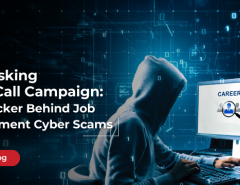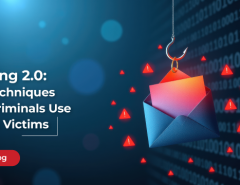Institutes and organizations across the world are using EdTech to complement their offerings further. However, it is also important to understand that the rapidly rising EdTech industry is also vulnerable to certain security challenges which can prove damaging.
A visible trend in Seqrite’s Threat Reports for 2020 is the huge impact of cyberattacks on the education sector. The rise of remote learning because of the COVID-19 pandemic has led to a further increase of cyberthreats in this sector.
As an industry which deals with education and deals with personal data for a large customer base, of which, many may be under the age of 18, it is important for EdTech company owners to recognize the cybersecurity implications they face and create processes to mitigate them.
Unauthorized entry
Currently, EdTech works on an access-control model. Classes are organized online and students are provided with a specific set of access controls like passcodes/passwords to enter these classes. However, there is always a risk of these access controls being inadvertently or deliberately leaked to an unauthorized third party which is a major security concern.
This became a major problem after the pandemic hit. Sanjay Katkar, Joint Managing Director & Chief Technology Officer, Quick Heal Technologies, wrote about the phenomenon of “Zoombombing” which refers to individuals hijacking ongoing meetings on the conference app. However, other enterprise collaboration tools. which are used in EdTech as well, are also at risk of unauthorized and forced entries. It is important that all such software that is used for imparting education is patched to the latest version and contains all the recent security updates.
Breach of sensitive data
In 2018, the United States’ Federal Bureau of Investigation (FBI) warned that the widespread collection of sensitive information such as personally identifiable information (PII), biometric data, academic progress, etc. presented “unique” exploitation opportunities for cybercriminals. In April 2020, the FBI reiterated that warning specifying that “Today’s rapid incorporation of education technology (EdTech) and online learning could have privacy and safety implications if students’ online activity is not closely monitored.”
The main takeaway: EdTech companies have access to a great deal of sensitive information. Loss or breach of such information is a major security challenge and it is important that all stakeholders in the EdTech sector ensure that such data is secured, both at rest and in transit.
Disruptions leading to downtime
The EdTech industry has shifted to the cloud so there are inherent cloud security risks involved here as well. There are thousands of systems and applications connecting to the cloud which may be used by teachers and students who may not be aware of inherent cybersecurity risks. They may be susceptible to ransomware or hacking attempts by malicious cybercriminals which could lead to disruption across the entire cloud.
Ransomware attacks on the education sector have also become increasingly common within EdTech organizations. All these types of disruptions could result in tremendous financial and reputational damages for EdTech organizations.
IT administrators of EdTech organizations must also reinforce their commitment to security by adopting and deploying top-grade cybersecurity solutions which will keep users and the enterprise safe from different types of challenges outlined in this article. Seqrite’s full range of security tools and other state-of-the-art solutions ensure enterprises remain safe against cyberattacks while complying with regulatory framework.




